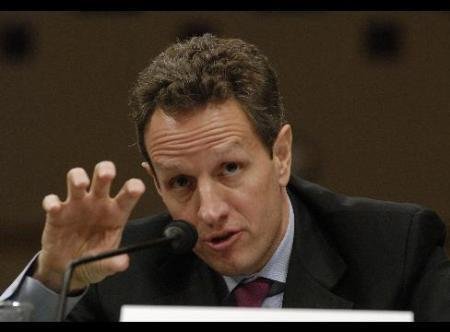
There is a thinly veiled conundrum surrounding the new Public-Private Partnership Investment Program (PIPP) created by Treasury to help get toxic mortgage assets off the books of banks. Who will be the ultimate owners?
We've heard the bellows of those you know best, "Sell 'em! Get 'em off the books of the banks! Break the credit freeze!" But where does a toxic asset live once it has been sold?
The present plan is to take the loans off the bank's books through an auction process overseen by the FDIC and Treasury in partnership with the private sector. A handpicked group of fund managers will manage the troubled portfolio. They can also bid for packages of bad loans or buy into newly created investment funds.
Will these loans magically lose their toxicity because they've been "cleansed" via a government sanctioned auction process? The theory is that they will be priced in such a way as to "cleanse" them of their sins. We hope. Now is the time to focus on the Obama Administration's frequently used term, "price discovery."
Treasury and the FDIC will take a best guess on how to price them based upon a number of esoteric market factors. However, if the buyers of the toxic assets bid a low price and the banks hit those bids, the banks will take a current hit on their own P&L. If they don't hit the bids, there will be few, if any, transactions. In lay terms, the price has got to be right or there will be no buyers in the auction process. The banks may have to take a bath on the loans to get them off their books, all at taxpayer expense.
Then we get to the gnarly part. Once they auction off the loans, who will be the ultimate owners? Where is the final resting place of a toxic asset? We know that investment funds have been formed to take advantage of this opportunity. The securities will get sold at auction to, for example, institutional investors and some of the large public pension funds. Stay with me. The ultimate investors in those funds are individuals. Me and you - the folks from Main Street. The wheel has come full circle.
Along the same lines, while banks can't purchase their own assets, under the Treasury program there is no ban on the purchase or sale of securities and loans by financial institutions to one another. The average person likely doesn't realize that banks will be able to sell the loans to each other - which means that toxic loans could wind up back on the books of the same financial institutions but with different parentage. This approach won't rid the financial system of toxic assets. It will merely make the government and taxpayers liable for losses.
It is questionable whether Main Street will be able to make money on ownership of toxic assets as an investment strategy. Wall Street knows how to price risk into the sale of an asset, but the risk adjusted price is likely not going to benefit the ultimate investor if the margin potential has already been realized. Bear in mind that these things are going to be priced with prayers and pixie dust.
Who then will the circle of toxic investing really help? While the banks will get a manufactured "clean bill of health," that is like removing HIV from one person and injecting it into the body of another and expecting that nothing will happen. Private sector participants partnering with Treasury will need assurance that they can make money on the portfolios or they won't get involved. No one could blame them for that. After all, think of the political lion's den they are stepping into in order to assist in saving the global economy.
We are using taxpayer funds to bail out banks, we are using taxpayer funds to dispose of assets that destroyed our economy, wealth and retirement savings. Then we will sell the same toxic assets back to Main Street as investments to rehabilitate our retirement savings. This concept fails the same as the theory that laundering money makes it clean. It is still the same dirty money, just in different hands.
We are not facing the heart of the matter by merely moving these loans around like a Rubik's Cube. Yes, it is a complex question, but I'm scratching my head to figure out why taxpayers have to foot the bill to dispose of these assets to merely bounce them from one institution to another. A toxic asset is no less toxic if it finds a new home in another investment portfolio. Isn't that what got us here to begin with?
Even if the loans are off the books of the banks, it is doubtful that banks will be any more willing to lend in this tough economic environment. Banks should be made to face the music and restructure these loans or unwind positions under the guiding hand of Treasury, the Fed and the FDIC in partnership with the private sector. Then they will be forced to take responsibility for the mess they've created.
As retail investors, we should be scared to death that we will, unwittingly, own these things a second time. These loans originated in banks, got sold to the secondary market, were chopped up eight ways to Sunday, wound up in pension and other types of investment funds all over the world -- and then crashed the market. Today, they are performing worse than before, but will get repackaged and sold again. Fool me once, shame on you. Fool me twice, shame on you and me.